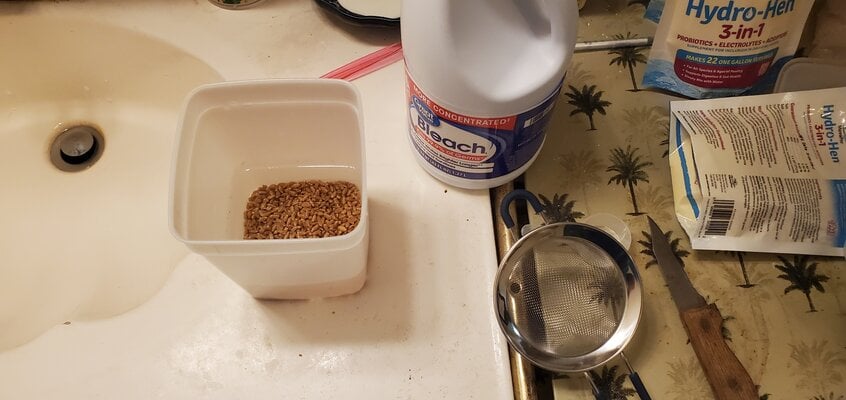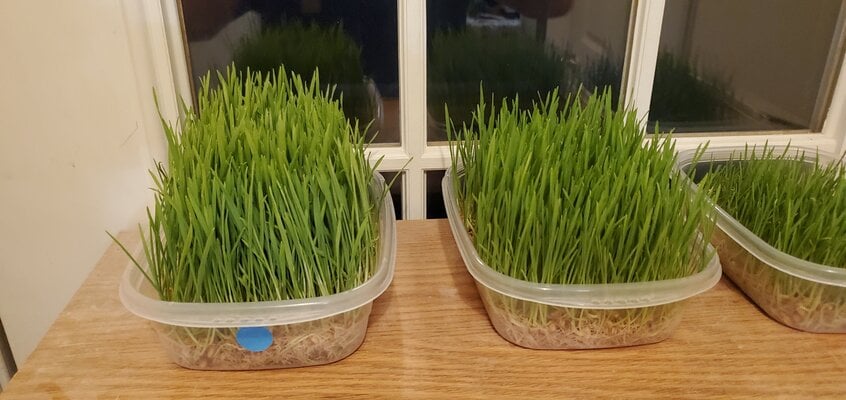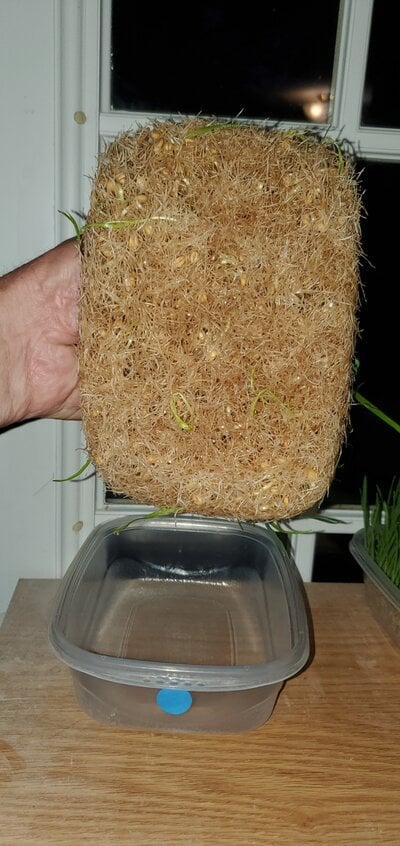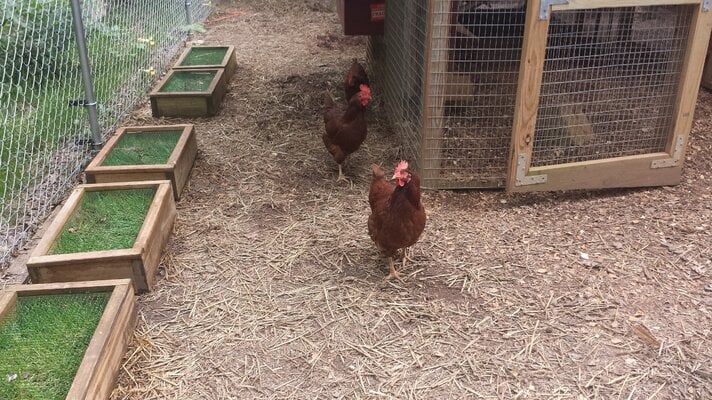This summer I've been having a problem with mold growth on my Wheat Grass sprouts. After some conversation with @gtaus in this long thread about my sprout experiments I came to the conclusion that the mold was actually on the seed shell. After some searching I found that some universities use a 5% Sodium Hypochlorite (household bleach) and water to sterilize seeds before germinating them. So I thought it was worth a try as I was just having a terrible time with mold... well it did look rather cool under the microscope but I didn't want to feed my hens mold.
I thought this needed a new thread so it's not lost in my experiments thread.
The method I use to eliminate mold from the seeds prior to sprouting them is to soak them for ~30 or so minutes in one cup of water with 1 tablespoon of bleach.

Then I use a small strainer to rinse the seeds off well. I like the small strainer as it's easier to use under the faucet.

Then I put them in my usual container and soak them overnight in a solution of Hydrogen Peroxide ( 1 ounce) and water (about 3/4 gallon).
I soak the rest of the containers for ~1 hour or so each morning.

This is day 8 and 9 on the left. The blue sticker shows me which one I started with the sterilization process.
These also get soaked for ~1 hour or so each morning in the Hydrogen Peroxide solution.

And the money shot! NO MOLD!

JT
I thought this needed a new thread so it's not lost in my experiments thread.
The method I use to eliminate mold from the seeds prior to sprouting them is to soak them for ~30 or so minutes in one cup of water with 1 tablespoon of bleach.

Then I use a small strainer to rinse the seeds off well. I like the small strainer as it's easier to use under the faucet.

Then I put them in my usual container and soak them overnight in a solution of Hydrogen Peroxide ( 1 ounce) and water (about 3/4 gallon).
I soak the rest of the containers for ~1 hour or so each morning.

This is day 8 and 9 on the left. The blue sticker shows me which one I started with the sterilization process.
These also get soaked for ~1 hour or so each morning in the Hydrogen Peroxide solution.

And the money shot! NO MOLD!

JT



